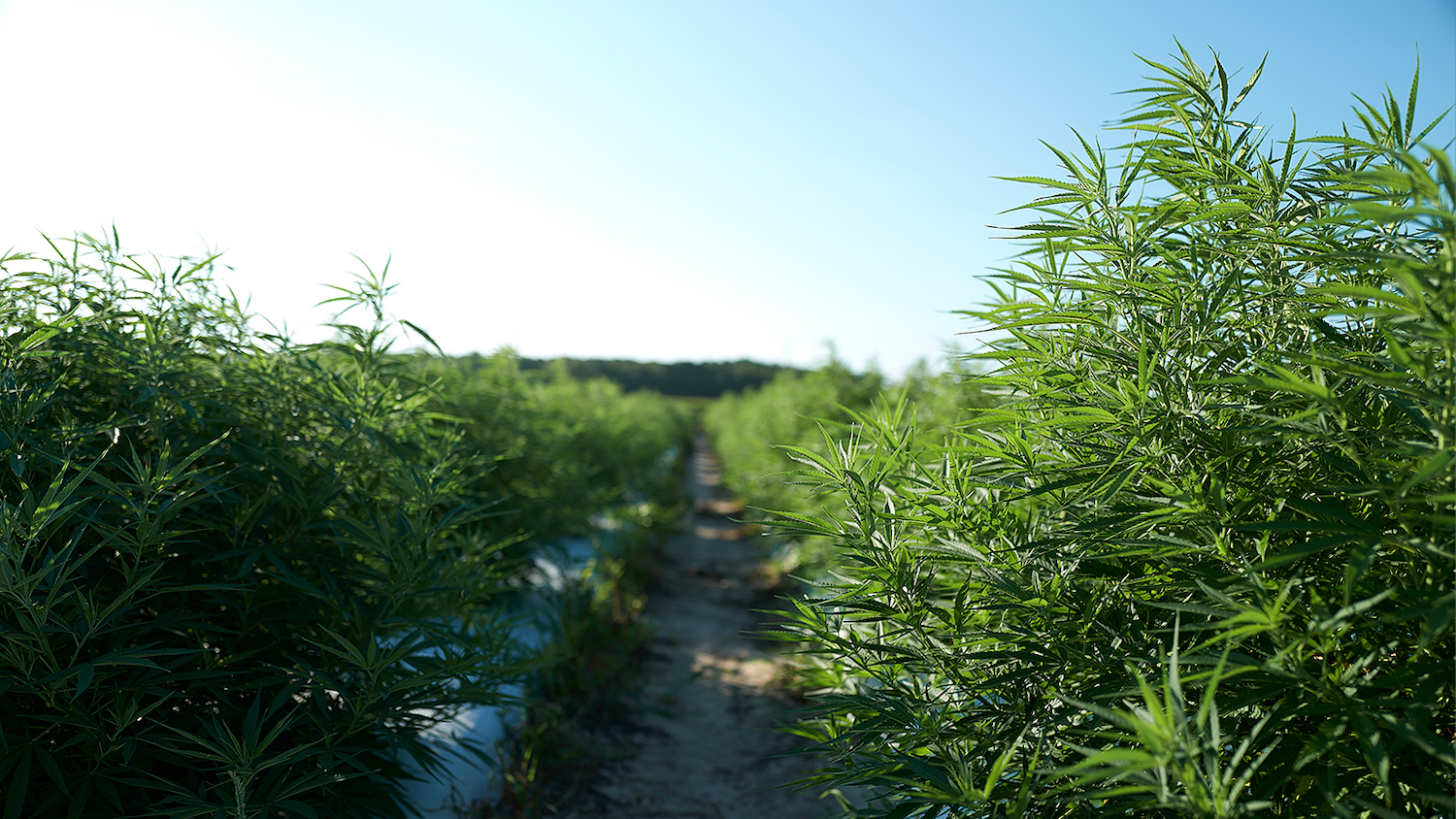Industrial Hemp: A More Sustainable Option for the Hygiene Industry

Researchers at NC State’s College of Natural Resources are using industrial hemp to develop tissue paper products and nanocellulose materials, a move that could help transform the hygiene industry and make it more sustainable while providing new economic opportunities for agriculture and farming communities.
With the demand for sanitary and disinfectant paper in household hygiene products on the rise due to the COVID-19 pandemic, increased health awareness and low costs, making sustainable and profitable tissue paper products — toilet paper, tissues, paper towels, napkins and feminine wipes — more critical than ever.
“Hemp extract and seed production dominate the market today,” said Lokendra Pal, an associate professor in the Department of Forest Biomaterials. “Yet, the future success of this valuable crop relies on making fibers for hygiene and other bioproducts. We’re at the fore to innovate hemp fibers and create a new paradigm for hemp value chain.”
Transforming the Hygiene Industry
Pal and his collaborators, Lucian Lucia and Hasan Jameel, both professors in the Department of Forest Biomaterials, have spent the last several years working to create paper products and nanocellulose materials out of hemp hurds. Hurds are the soft inner core fiber of the hemp stalk and are primarily used as a waste product for animal feed and bedding.
“It is a miraculous crop in many ways, and we’re trying to take advantage of its fiber properties,” explained Lucia, who received his industrial hemp processor license in 2016.
Inside the lab, Pal and his colleagues discovered that hemp hurds can be converted to fibers through a chemical-free process — which heats the plant’s dry matter in a watery medium at temperatures in the range of 80-220°C. Hemp pulp fiber, which is among the strongest natural fibers in the world, shows improvement in strength and softness of tissue and hygiene papers when mixed with hardwood pulp fibers, according to Pal.
“Our research develops effective solutions in a frugal and practical manner by combining sustainable green chemistry and waste biomass from industrial hemp,” he said.
Pal added that the research directly supports two of the United Nations’ sustainable development goals: ensuring healthy lives and promoting the well-being for people of all ages and ensuring responsible, sustainable worldwide consumption and production patterns.
Not only can hemp be used to create eco-friendly paper hygiene products, but it can also improve society’s health. While hemp extracts like cannabidiol, known as CBD, have medicinal value, recent research conducted by Pal and collaborators found that hemp hurds exhibit antimicrobial properties. “We want to exploit it more, which will not only help in this pandemic but will help enhance human health in general,” he said.
The growth of hemp could also play a key role in driving the agricultural economy.
“We’re trying to benefit the rural communities where the farmers are hurting by the tobacco decline,” Jameel said. “This could be especially lucrative for the North Carolina farmer, and it will provide a lot of jobs to people who are hurting right now.”
Breaking the Cannabis Stigma
One challenge facing the adoption of industrial hemp is the stigma that surrounds the plant. Hemp is often confused with marijuana, and often, policymakers believe that by legalizing hemp they are also legalizing marijuana. When it comes to classification, hemp and marijuana are the same plant but are different names for the same genus — Cannabis.
By legal definition, the term “industrial hemp,” which goes by the Latin name Cannabis sativa L., is used to describe non-intoxicating Cannabis that is harvested solely for the industrial use of its derived products.
The hemp family of plants contains varieties of Cannabis that provide a dry weight of 0.3% or less Tetrahydrocannabinol, known commonly as THC, which makes it unsuitable as a narcotic. THC is the primary psychoactive compound in Cannabis that produces the euphoria and sense of relaxation felt by users. By comparison, marijuana on average contains between 5 to 20% THC.
Planting for the Future
Approximately 30 countries, including Canada, Britain, France and Germany, permit farmers to grow industrial hemp. For decades, the United States has had a moratorium on the growth of hemp and recently reintroduced industrial hemp production through the 2018 Farm Bill, partially in response to a significant decline in economic activities from tobacco production.
The bill has created new economic opportunities for agriculture and farming communities, especially in five of the country’s primary tobacco-growing states: Kentucky, North Carolina, South Carolina, Tennessee and Virginia.
Pal said the future of industrial hemp will heavily depend on the utilization of every part of the plant in high value products which requires evaluation of additional products such as more productive oilseed cultivars, and the utilization of biomass such as bast fibers and hurds for the development of consumer goods such as tissue and hygiene products, nonwoven and textile materials, packaging and molded products, cellulosic plastic composites and building materials such as fiberboard.
“Our grand objectives are to avail specific emerging opportunities for bioproducts, biochemicals and bioenergy production in collaboration with key stakeholders for a strong industrial hemp bioeconomy in North Carolina and the United States,” he said.
Note to readers: An abstract of the research follows.
Title: Ecofriendly and Innovative Processing of Hemp Hurds Fibers for Tissue and Towel Paper
Patent Disclaimer:
- Hemp Specialty Paper, NCSU Technology Disclosure #17047
- Nature-derived antimicrobial agents-based fibers, papers and films, NCSU Technology Disclosure #2021-034
Authors: Ved Naithani, Preeti Tyagi, Hasan Jameel, Lucian Lucia and Lokendra Pal
Abstract: An innovative approach for preparing hemp fibers from hemp hurds for use in tissue and towel grades of paper is described. Hemp hurds are a low value by-product of industrial hemp processing that are generally used for animal bed litter. Tissue paper was fabricated from hemp hurd fibers by following three pulping processes: autohydrolysis (hydrothermal), sodium carbonate-based defibration, and high yield kraft pulping, and benchmarked against hardwood pulp. To meet industrial standards, hardwood and hemp pulp fibers were mixed at a dry mass ratio of 75:25, from which tissue paper sheets were prepared. Desirable tissue paper properties, such as water absorption, burst resistance, softness, and tensile strength (dry and wet), were measured and compared. Characterization of morphological and chemical properties of tissue handsheets was conducted with SEM and time-of-flight-secondary ion mass spectrometry (ToF-SIMS). The combined kraft pulped hardwood and autohydrolyzed hemp pulp fibers displayed improvements in tensile index, burst resistance, and softness of tissue handsheets compared to only kraft hardwood pulp handsheets without adversely impacting water absorption. Hardwood fibers showed a sparse distribution of surface lignin compared to hemp fibers using the same defibration. This technology can lead to a variety of eco-friendly tissue paper products that are not only highly energy efficient, but avoid harsh chemical processing.
Published: BioResources Volume 15 Issue 1, Pages 706-720
Contact information: Department of Forest Biomaterials, North Carolina State University, Box 8005, Raleigh, NC 27695-8005, USA; Corresponding author: Lokendra_pal@ncsu.edu
- Categories:


